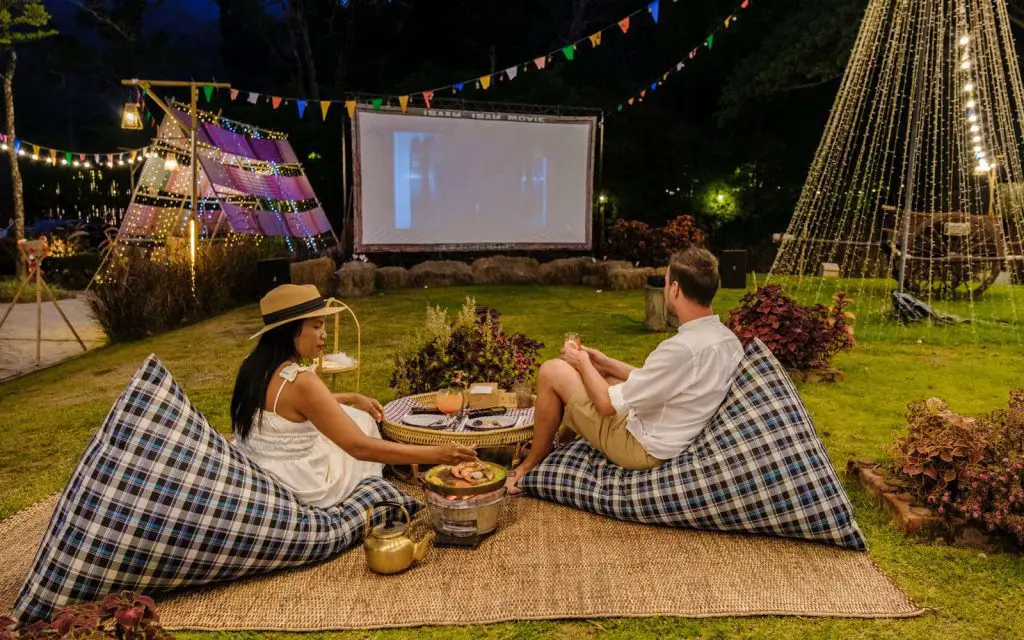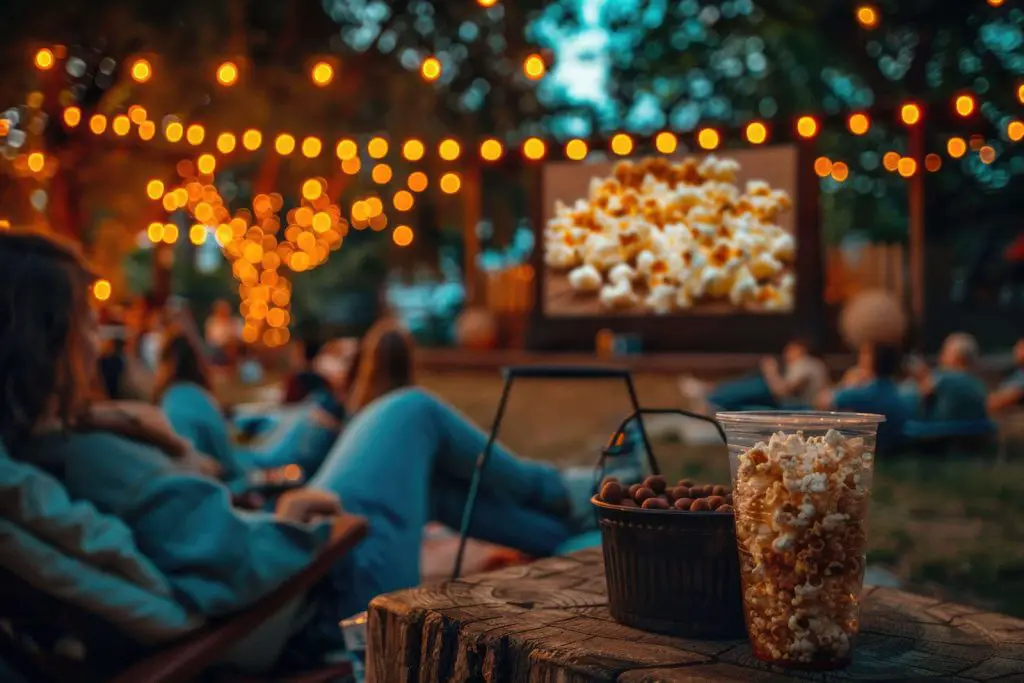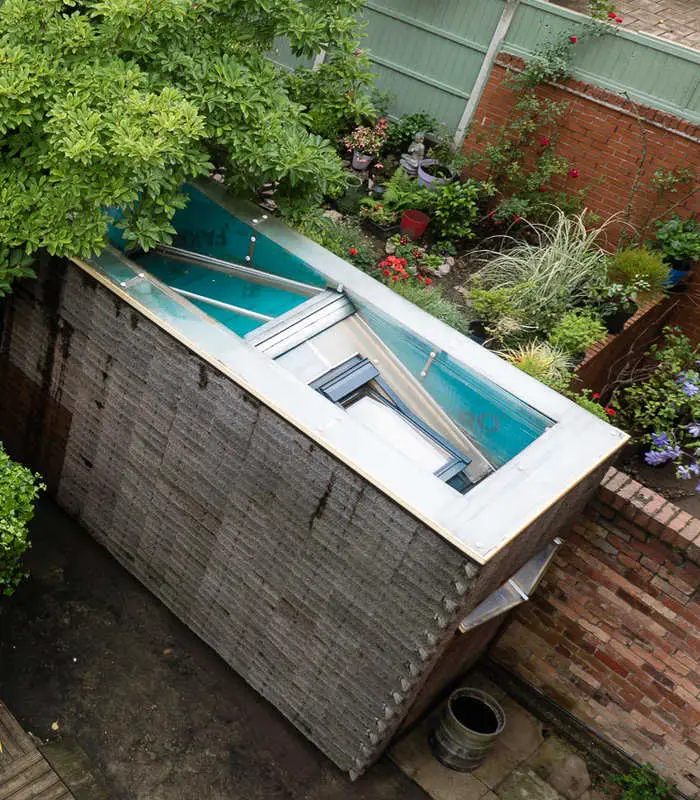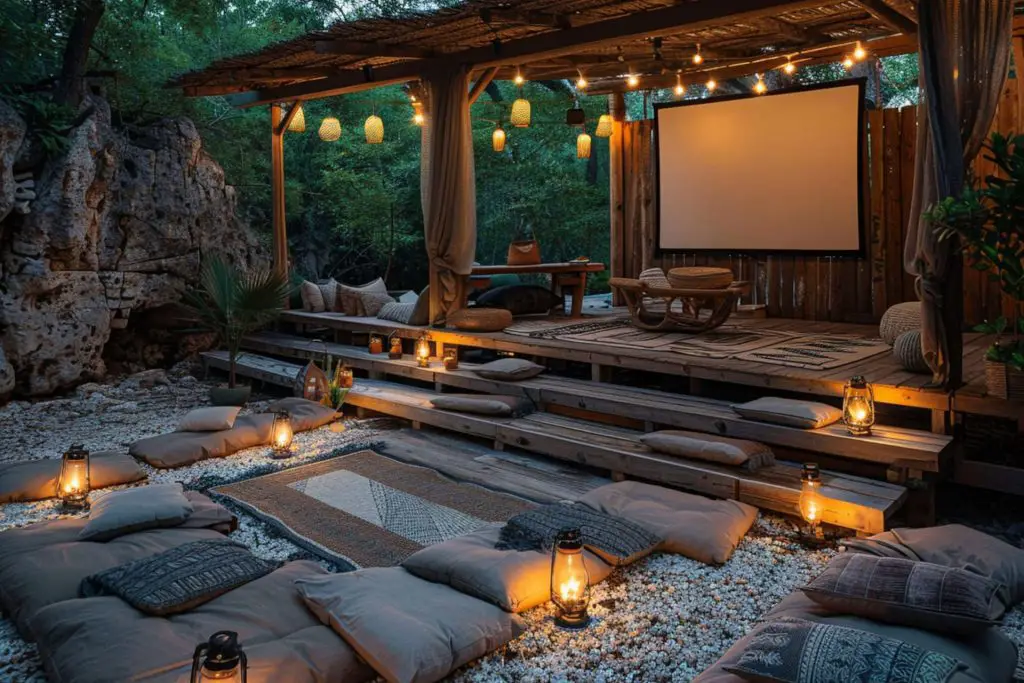How to Transform Your Backyard Into a Movie Theater
You can easily transform your backyard into a movie theater without spend much and enjoy all your favorite films creating the atmosphere of outdoor movie watching and even watch under the stars.
Why would you want to transform your backyard into a movie theater?
According to the National Association of Landscape Professionals there is a massive demand for outdoor living spaces. Places where people can have fun, enjoy family activities and entertain friends. The Pandemic and various lockdowns meant that backyards being one of the few outdoor spaces available and this appears to have driven the renewed interest people have in their own back yards as places. Turning your backyard into a movie theater is an extension of this.
What You Need to Turn your Backyard Into a Movie Theater
You can make the transformation of your backyard into a movie theater as simple or elaborate as you want, and can be accomplished on on pretty much any budgets.
Whatever you are planning whether it be a small a family movie night in the backyard or a big block party, you may find yourself overwhelmed with the choices and options for outdoor movie screens.
Types of Outdoor Movie Screens

Thankfully you have an abundance of choices as to what type of outdoor movie screen to use but there are a few basics to consider when it comes to the screen.
Screen size is determined by the throw distance of your projector. Screen size is measured diagonally from corner to corner. Throw distance is the distance from the lens of the projector to the center of the screen.
Screen Material: There are three main materials used in the construction of outdoor movie screens.
- Fabric, for larger screens, is the most common material used. Weights are often used to keep the material taught.
- Screen sizes can be from 6 feet to 30 feet or larger.
- Screen sizes in the 6 to 15 foot range are ideal for home use.
- Screen sizes in the 10 to 20 foot range are ideal for small community events.
- Screen sizes in the 30 to 60 foot range are ideal for large community events.
- Screen sizes in the 4 to 6 foot range are ideal for smaller secondary screens.
- Vinyl, for larger screens, is a newer technology. Again weights are often used to keep the material taught.
- Screen sizes can be from 10 feet to 30 feet or larger.
- Screen sizes in the 10 to 20 foot range are ideal for home use.
- Screen sizes in the 30 to 60 foot range are ideal for large community events.
- Screen sizes in the 4 to 6 foot range are ideal for smaller secondary screens.
- Aluminum, for the largest screens, is the newest material. As with fabric and vynal weights can be used to keep the material stable.
- Screen sizes can be from 30 feet to 50 feet or larger.
- Screen sizes in the 30 to 60 foot range are ideal for home use.
- Screen sizes in the 50 to 100 foot range are ideal for large community events.
- Screen sizes in the 4 to 6 foot range are ideal for smaller secondary screens.
Projector Screen

A projector screen is the most common type of outdoor movie screen, and it’s also the most affordable. The screen is usually made from cloth stretched across a frame. The cloth is translucent, allowing the light from a projector to shine through it. The frame is either supported by a portable stand or mounted on a wall.
Unfortunately, this type of screen doesn’t work well in the wind, so choosing a sheltered location to install it is a necessity. And because the projector is placed directly in front of the screen, the room you’re trying to project the movie into will have to be pretty big.
Depending on the size of your outdoor space, you may need to use a special projector screen that has built-in illumination, which can be more costly than a standard projector screen.
Some projector screens also feature a motorized mask that covers up the screen, allowing you to show only the movie, and not the blank screen in between scenes.
Tensioned Screen
Tensioned screens are made from a durable fabric stretched across an aluminum frame. These screens are considered more durable than projector screens, but they’re also heavier and a bit more expensive. Because these screens are made from a fabric and not plastic, they’re a bit more flexible and come in a variety of sizes. They’re also easy to clean and transport.
Tensioned screens are a great choice for outdoor movie nights when you expect the weather to be a bit more challenging. The best part is that you can also use these screens for indoor movie nights.
Plasma Screen
Plasma screens are also known as plasma projectors. This type of screen is made from a thin sheet of glass that’s coated with a layer of phosphor or gas. When the screen is placed between two glass panels, the glass glows and the image appears. Plasma screens are popular because they’re easy to use and very portable, but they’re a bit more costly than other types of screens and require that you use special projectors that can be pricey as well.
Other Types of Screens to Transform Your Backyard Into a Movie Theater
A few other types of outdoor movie screens include:
3-D Projection Screen
This type of screen is used for 3-D movies. It’s made from three layers of translucent fabric stitched together. All the layers have a different color, and the screen contains special lenses that combine the different colors into one image.
This type of screen is found in theaters, and it’s the perfect choice for home theater systems. It’s also quite expensive.
4K Projection Screen
4K projection screens offer the highest resolution, but they’re also the most expensive. They’re made from either a high-resolution fabric or a transparent material that’s coated with a phosphor layer. These screens are best suited for home theaters because they offer a crisp, clear image.
You can also find outdoor 4K projection screens that are made from a high-resolution fabric and are attached to the frame with Velcro. Screen Materials Screens for outdoor movie nights can be made from a variety of materials, including:
Plastic Outdoor Movie Screens
Plastic is the most common material for outdoor movie screens. It’s durable, inexpensive and easy to install. It’s also relatively easy to clean and transport. Some plastic screens include an integrated motor that can be used to pull down the screen.
Movie Quality Sound in the Backyard

Although most of the types of projector we have discussed above come with sound, the quality isn’t always as good as it could be, indeed it probably isn’t going to come close to providing anything like theater standard audio. This is especially true in an outdoor setting like your backyard.
Luckily, wireless outdoor sound systems are available that are compatible with most projectors, allowing you to pump the volume up to 11 without disturbing the neighbors making your transformation of your back yard into a movie theater worthwhile.
You can purchase a wireless outdoor sound system with or without a built-in subwoofer, which gives you the option to add one later if you decide you want more bass. If you opt for a soundbar without a built-in subwoofer, you’ll need to connect it to a separate subwoofer via a digital optical or RCA connection.
You’ll also find that some soundbars come with an optional wireless subwoofer that you can place anywhere within its wireless range. These systems are great if you don’t want the subwoofer to be wired to the soundbar, but if you do, you’ll need to use an RCA or digital optical connection.
You’ll also find that some soundbars come with an optional wireless subwoofer that you can place anywhere within its wireless range. These systems are great if you don’t want the subwoofer to be wired to the soundbar, but if you do, you’ll need to use an RCA or digital optical connection.
If you want to connect your soundbar to your projector, you’ll need to choose a wireless system that uses the same type of connection your projector does. For example, HDMI, DVI, or VGA. Be sure to select one that offers a long enough wireless range to cover the length of your backyard. You’ll also want to make sure the wireless system you choose offers digital audio decoding and surround sound processing, or it will only deliver stereo audio to your soundbar.
When choosing a wireless outdoor sound system, be sure to check the range of the included remote control. If you want to be able to control the volume from your favorite seat, you’ll want to make sure you can reach the remote.
If you’re looking for a wireless outdoor sound system for your projector, you’ll find a variety at B&H Photo, including many that come with a built-in subwoofer.
Other Outdoor Movie Accessories You Might Want

Now that you have sorted the screen and the sound delivery it is time to look at what else you might want in terms of how you want to transform your backyard into a movie theater.
For the movie itself, a projector is obviously the way to go, but many of them are pricey and require a fair amount of setup. If you’re looking for a simpler option, you might consider buying a DVD player and a projector screen instead. A projector screen is basically a large piece of fabric (usually white or black) with a built-in steel frame that can be hung from a wall or tree. They’re a great way to get a movie up on the wall without adding a lot of technical complexity—and you can pick one up for less than $100.
For the power source and media player, you have several options. If you’ve got a television, you can connect it to a DVD player or laptop and watch movies directly on the television. You’ll need an HDMI cable to do that. If you don’t have an HDMI cable, you can use a composite video cable to connect the DVD to the television.
If you don’t have a TV and you want to play a movie on a screen, you can use a digital media player, like a Roku or a Chromecast, to play movies on your TV from your laptop or smartphone. Or, if you’re already out of the house, you can use an app to stream movies directly to your phone.
Finally, if you don’t have an available outlet or a digital media player, you can always bring a radio outside with an auxiliary cable, or use a battery-powered boom box.
Backyard Movie Comfort Extras
Now it is time to consider the little extras that make movie nights special. Comfort and snacks are of course the main consideration but generating the right atmosphere also makes a big difference
The best seating would be sturdy, comfortable, weatherproof and easy to clean. There are many types of seating that would work great for outdoor movie nights. Some ideas include: • Sofa sets • Outdoor recliner chairs • Adirondack chairs • Lawn chairs • Couches • Sectionals • Ottoman • Bean bag chairs • Patio furniture, etc. • Outdoor pillows • Blankets Additional accessories that you may want to consider for outdoor movie nights include: • Popcorn popper • Blankets • Pillows • Heaters • Ice chests
Food and drink
You are more than likely to have snacks covered by whats already in your pantry as this will help save a few dollars.
If though money is not really an object, you could of course look at commercial-level popcorn machines, movie candy, and bar carts galore,movie candy, and bar carts. These are surprisingly easy to get hold of and come at variousy of price levels and would be fantastic accessories when you transform your backyard into a movie theater
Even if you can run to some of the grander ideas, everyone with an inexpensive projector a few chairs and blankets and pantry snacks can enjoy backyard movie nights under the stars that are magical and a treat for just you, your friends or your family.
Summary: How to Transform Your Backyard Into a Movie Theater
Transforming your backyard into a movie theater helps turn it from just garden into a true entertainment hub for both family and friends. Your backyard becomes a place where you can come together as a family or with friends, where can screen films or just enjoy a quiet private night with your partner.
To enhance the idea of your back yard being an entertainment hub additional projects you could undertake include building a fire pit which could also be used for barbecues and by adding lighting to bring your backyard space to life.
